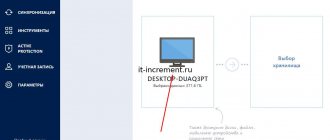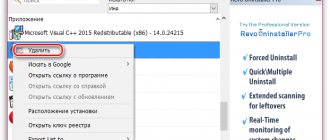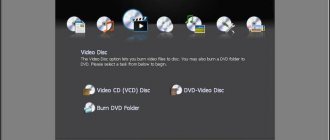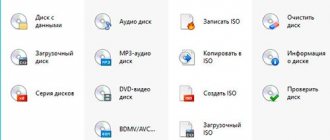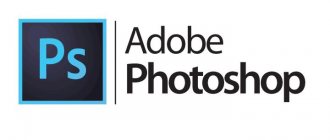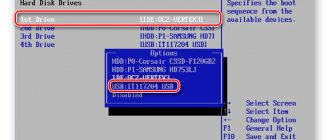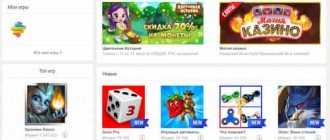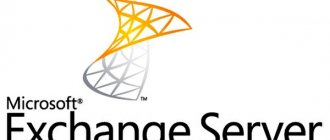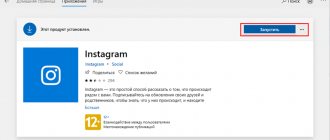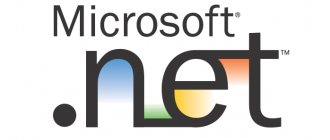API Preliminary Information
Before we start talking about DirectX and Vulkan, we need to first understand what an API is. The acronym stands for Application Programming Interface.
An interface is designed to provide communication between two objects. One example is the Windows GUI, which acts as an intermediary between the operating system and the user.
The interface provides a user-friendly environment. With this environment we use the operating system without knowing how its functions are implemented in the background. An application programming interface (API) fills the middleman role. However, this time the user may be a PC or other program and not necessarily a human. APIs are much more common than one might think, offering programmers the tools they need to create their software.
A rough example where we use the API is when we automatically sign up for a new social media tool or online service using our pre-existing accounts from Facebook or Google (instead of creating a new account manually).
In such cases, the website uses an API through which it communicates with a specific service (such as Facebook or Twitter) to collect our personal information (name(s), email address, contact numbers, etc.) to create our new account.
However, there are many other uses of APIs for all kinds of interactions between applications and computers, such as database systems, operating systems, and software libraries.
In such cases, the use of APIs applies to our computer hardware and in particular to our graphics card(s).
DirectX and Vulkan actually improve the communication between the application (game) and the GPU to improve graphics performance.
Vulcan AMD
In 2020, Kronos Group developed its own API. Vulkan is a low-level API used for developing graphically intensive applications. Its first stable version debuted in August 2020.
It should be made clear that “low level” does not refer to quality. Instead, the term describes Vulcan's ability to operate at the hardware level.
Chronos surrounds itself with some of the biggest names in the IT industry. Some of them are Google, Intel, Sony, Nvidia and AMD. The last two provided APIs that minimize Vulkan development time.
OpenGL is a popular API among graphic designers. It was actually designed by Chronos, and it also includes many of the characteristics of Vulcan. However, its reception by game designers was unexpected.
One of Vulkan's strongest assets is the fact that it is open source. Additionally, Vulkan's cross-platform compatibility along with overall performance are two additional assets that make it more profitable than DirectX.
Here you can find a complete list with names that contain Khronos. The mantle provided the main base on which Vulcan was developed. Finally, Vulkan is currently at version 1.1.
How do they affect games?
Up to this point, we've covered some basics regarding APIs, Microsoft, and Khronos. But how do they affect games?
These two APIs have greatly improved performance. So far, DirectX has seemingly provided better performance than Vulcan, which it's actually not that far behind.
Microsoft claims that DirectX 12 reduces consumption by 50% when using DirectX 11. On the other hand, Vulkan also shows better flexibility than its predecessor. Speaking of predecessors, DirectX 11 and OpenGL were created with single-core processors in mind; which means they haven't been fine-tuned using the new, multi-core processors.
As a result, one core runs most of the various processes while the others run at low speeds and are sometimes disabled altogether. Both APIs (DirectX 12 and Vulkan) support processors with multiple cores and threads to get the most out of their capabilities. Moreover, they transfer most of the required tasks from the processor to the graphics card(s), offering a more balanced experience.
The interaction between these two elements can have a significant impact on future PC builds. Graphics cards are largely more important than CPUs when it comes to gaming. With the continued development of gaming APIs, it's unlikely that CPUs could become even less important when it comes to it. So even with a simple processor we can get good performance without any bottlenecks.
Where does Vulkan come from on my computer?
Typically, Vulkan is installed on the user’s computer with drivers for Nvidia graphics cards (AMD Radeon remains uninterested in distributing the Vulcan API, but claims to support this API on its devices based on the CGN kernel). According to Nvidia representatives, the company has released drivers with Vulkan support for Windows, Android and Linux, promising increased overall game performance, improved graphics detail, higher FPS and a number of other bonuses.
Typically you can find this API on your computer at C:\Program Files\VulkanRT\1.0.11.1.
Multiple graphics card support
Here Khronos Group encountered a significant gap between the two APIs with support for using multiple graphics cards (explicit multi-GPU usage). We can use different cards if their chips have a similar architecture and use the same driver. This will allow different cards to handle a different part of the screen.
Microsoft goes one step further here by allowing you to use multiple graphics cards even from a different manufacturer, which is often the case since most systems have an independent and integrated GPU. It's important to highlight the fact that these implementations differ from the SLI and Crossfire capabilities from Nvidia and AMD, which are implemented via drivers, and in particular, in the case of SLI, require identical graphics cards.
How the VulkanRT program appeared on my computer
So, I went to Program Files (x86), and in this folder, next to the Skype folder, I found the VulkanRT folder. Going into the folder, I saw a folder with numbers 1.0.61.0 What could these numbers mean? Only the version of a specific program. Having looked through the directory more closely, among the program files, I discovered the uninstallation file for this program, UninstallVulkanRT (Uninstall - translated as “Delete”).
Of course, virus programs will not install a virus uninstaller file along with their pest software. It turns out that this Vulcan has nothing to do with the notorious malware, then why is it needed? And should it be removed or not?
Also, I noticed that my ESET Security antivirus does not respond to it in any way. In general, this is a strong antivirus firewall, and it usually responds quite quickly to threats. And here, complete silence from the antivirus. This means that this program is not dangerous for the computer, but on the contrary, it needs it and should not be deleted.
I did a little googling and came up with information that this software is directly related to computers that have an nVidia video card installed. And yet, a couple of months ago I updated the drivers, and among others, the driver for the video card was updated. And I have nVidia. I trust my free driver updater, DriverHub. Also, Driver Booster updates drivers perfectly.
This is an excellent program, which in its parameters is not inferior to its paid counterparts. And it was after updating the drivers that I got this utility. Now it’s clear that it includes updated video card drivers and under no circumstances should you remove it.
If you do not have a driver update program, or you prefer to install drivers manually, then you need to download this nVidia utility from the official website of this video card. Go to the website, select the software version according to the Windows bit size (32 - 64 bit) or according to the system that you have installed. Namely, Linux or Android. Then, look at the model of your video card and download the necessary drivers.
Shaders
Shaders are small programs that run on our video cards. They are responsible for specific functions of various objects in the 3D environment. The shadows, fog and lighting in the game are the result of the shader.
Vulkan uses an intermediate representation for shaders called SPIR-V. Its binary form is similar to DirectX DX bytecode.
SPIR-V version 1.3 features SPIR-V opt, a tool for reducing shader size. The maximum size reaches +40% of the DX bytecode of the corresponding DirectX representation.
Additionally, some structures in HLSL (High Level Shader Language), which were developed by Microsoft, were not directly supported by some video cards.
HLSL has been widely used by DirectX since version 9. It was used as a complement to the existing shader assembly language. With the new version of SPIR-V, Vulkan also supports it.
This way, developers can use existing code for their shaders and won't have to reinvent the wheel. Hence, games will be easily transferred from one platform to another.
VulkanRT What is the Program and Why is It Needed
Good afternoon friends. In RuNet, all users know about such a malicious program as Vulcan Casino. As you know, this is one of the malicious programs that replaces the launch pages in all your browsers with the page of this online casino. How to remove Vulcan, read the link.
But recently, while looking at system programs on drive C, I noticed a folder called VulkanRT. What associations did I immediately have? Of course, with the infamous online casino. But, I decided not to rush and figure it out properly.
Multi-platform compatibility
In terms of platforms, the big advantage of Vulkan is that it supports Windows, Linux, Mac OS, Android and iOS. DirectX 12, on the other hand, is only supported on Windows 10 and Xbox One. To take advantage of the improvements offered by DirectX 12, we either need to upgrade our operating system to Windows 10 or get a new console from the company.
If you want to try DirectX 12 and were unable to get Windows 10 during the free upgrade, check out our step-by-step guide to the free upgrade methods that are available:
Going back to the previous topic, a game port supported by the Vulkan API will be significantly simpler compared to a port supported by DirectX.
On the one hand, we can have titles on multiple platforms, and on the other hand, different operating systems have the ability to host our games. One of the reasons why Linux is not as popular as Windows is due to the fact that the latter is different from games.
Linux distribution may be the best choice to host our games as it can be adjusted for this purpose. For example, Steam OS is a specialized operating system designed exclusively for games.
Also consider: a company is thinking about creating game development software and wants to support an API. Who would you choose?
Both have similar power, both are better than their predecessors, and both provide clear graphics card use. Vulkan supports all platforms, including Windows 10 and Xbox One, while DirectX only supports the latter two.
What is this Vulkan Run Time Libraries app?
Vulkan Run Time Libraries is an application programming interface (API) for creating 2D and 3D graphics. According to the creators, Lunarg Inc, this API should replace Open GL, becoming the next generation of development of the capabilities of the Open GL concept. Initially, Vulkan was called "glNext" ("next GL"), but, in the end, the developers decided to give their brainchild a unique name.
A distinctive feature of this product is its cross-platform, that is, the ability to use it on various platforms and operating systems (Windows XP, Windows 7, Windows 8 and Windows 8.1, Android, Linux, SteamOS, etc.).
Vulkan was first revealed at the 2020 Game Developers Conference (GDC) in San Francisco. It was presented by representatives of the Khronos Group, an industrial consortium engaged in the promotion and development of various open APIs.
That is, at its core, Vulkan is a kind of alternative to DirectX 12, but unlike its analogue, it works not only on Windows 10, but also on other platforms and operating systems.
Development and future
It would be remiss to not mention the development progress of the two APIs. On the one hand, we have a DirectX veteran with over 20 years of development. On the other hand, Vulcan will barely be 3 years old from 2020. The fact that Vulkan is open source may have a slight impact on its growth rate. Certainly Khronos players seem to be taking API development seriously, as the improvement levels are impressive.
We can all create new tools and modifications and share them with the community, helping the API grow faster. Finally, it should be mentioned that DirectX does not have the above feature. Despite its years of development, about 40 games currently use Vulkan, occupying the majority of the market. Some of them are Quake, Roblox, Talos and Dota 2. In terms of performance, Vulkan comes close to DirectX and in some cases it beats it. The most exciting examples of Vulcan's work are the game Doom.
Vulkan has expanded its support for AAA titles such as Wolfenstein II, without neglecting VR titles such as Doom VFR and Serious Sam VR. Here you can see a detailed list of supported games. Although here you will find games with DirectX 12 support.
Both APIs have significantly improved performance. Better use of multiple graphics cards and less CPU usage will improve the overall performance of our systems. New graphics cards from Nvidia are rumored to be released by the end of the summer and will significantly outperform today's high-end graphics cards. Overall, the general state of things seems quite flexible. Either way, changes in game development are upon us soon, and both APIs will undoubtedly play an important role.
How to remove Vulcan Runtime Libraries
If you are interested in how to remove this program, then first of all, I will note that it is not recommended to remove this program, as it helps to increase productivity and improve the quality of graphics on your computer. If you decide to delete it, then you need to go to the standard removal of programs, find the Vulcan program (programs) there and delete it.
Removing the Vulcan virus
You can also follow the path described in the previous section and run the product uninstaller located there (UninstallVulkanRT) in this directory.
